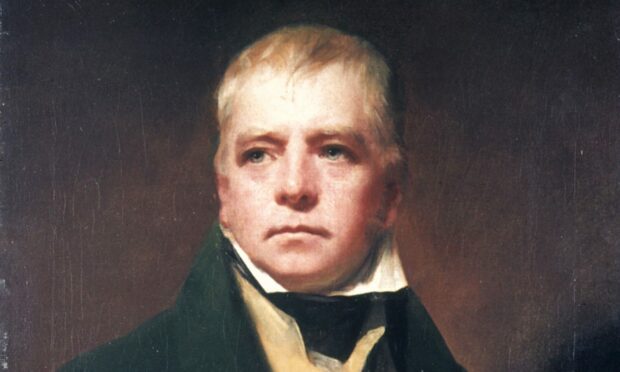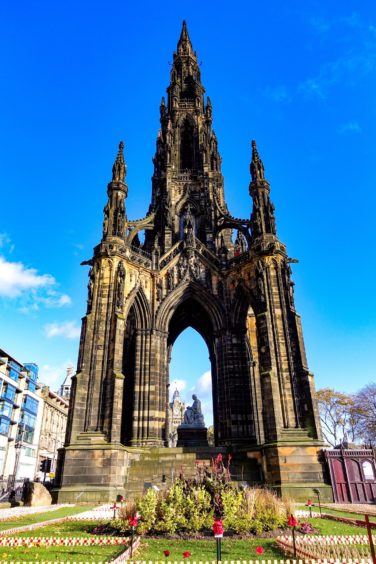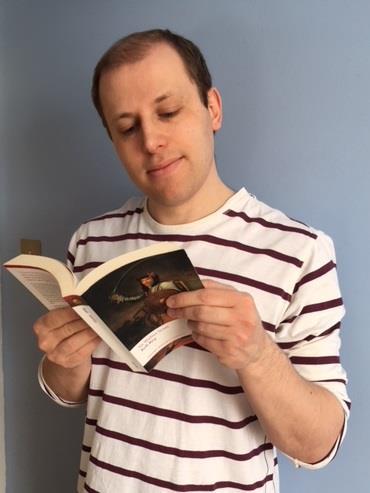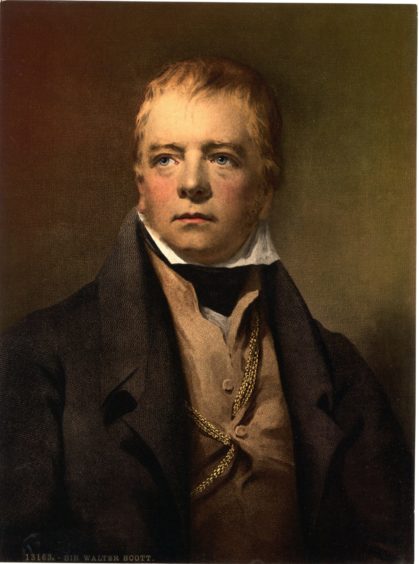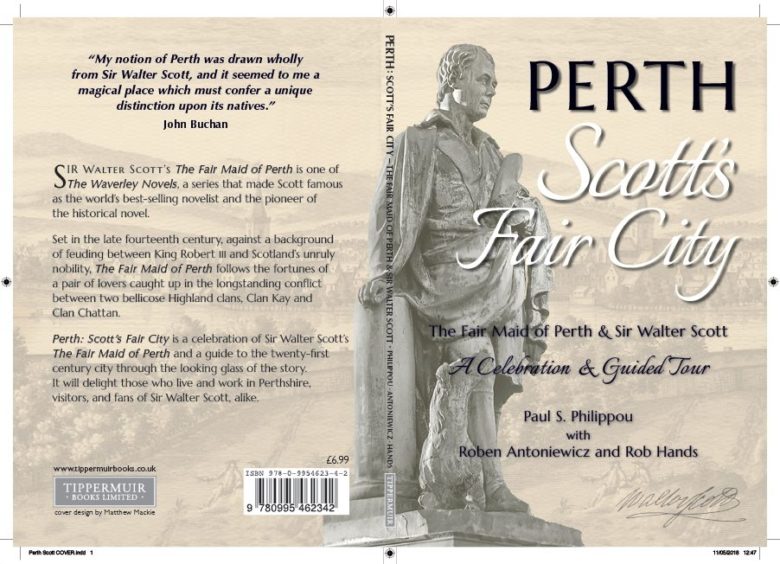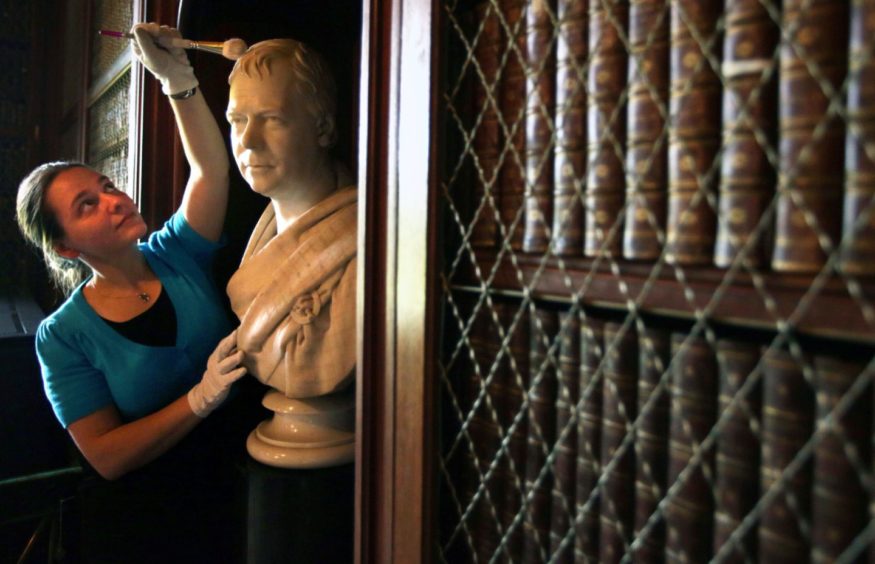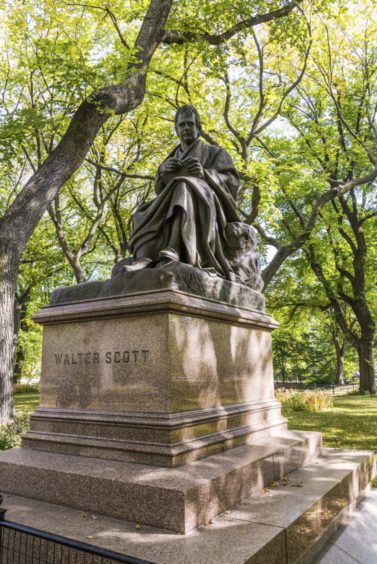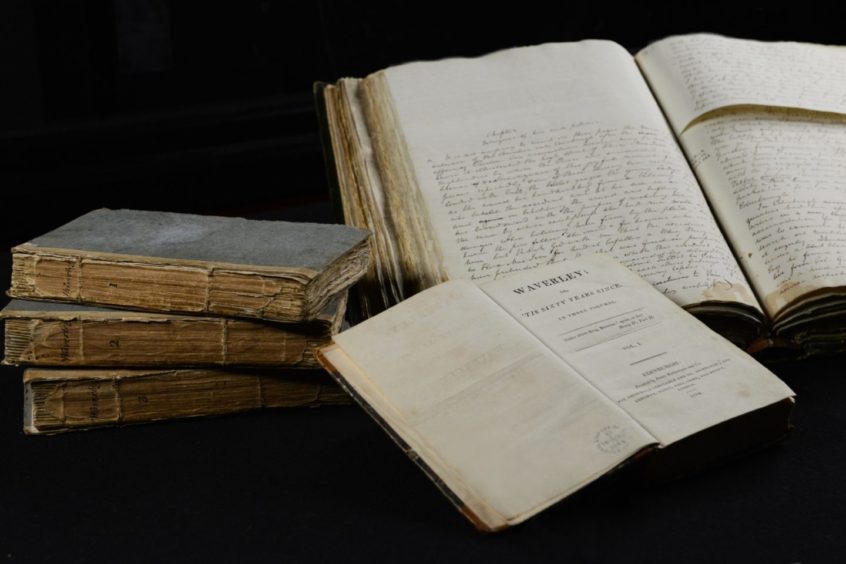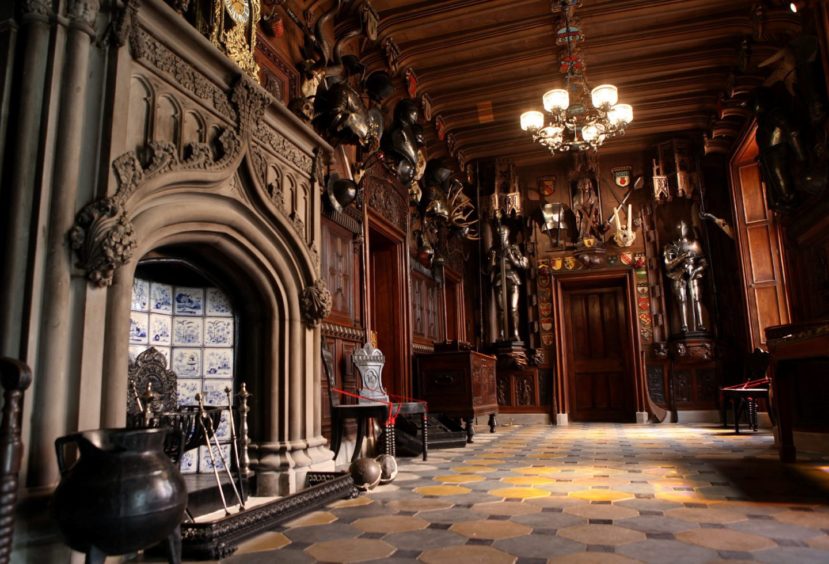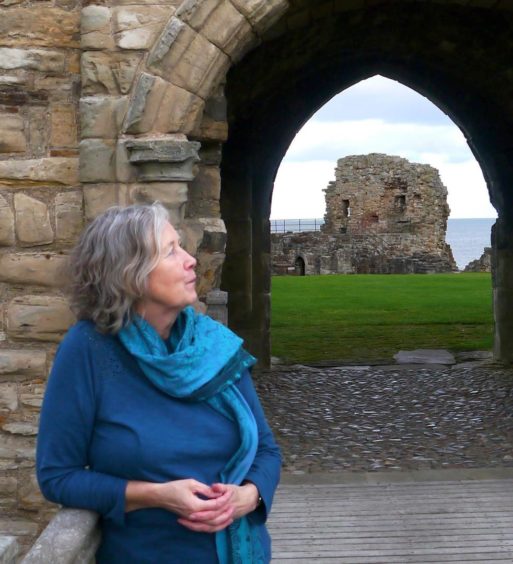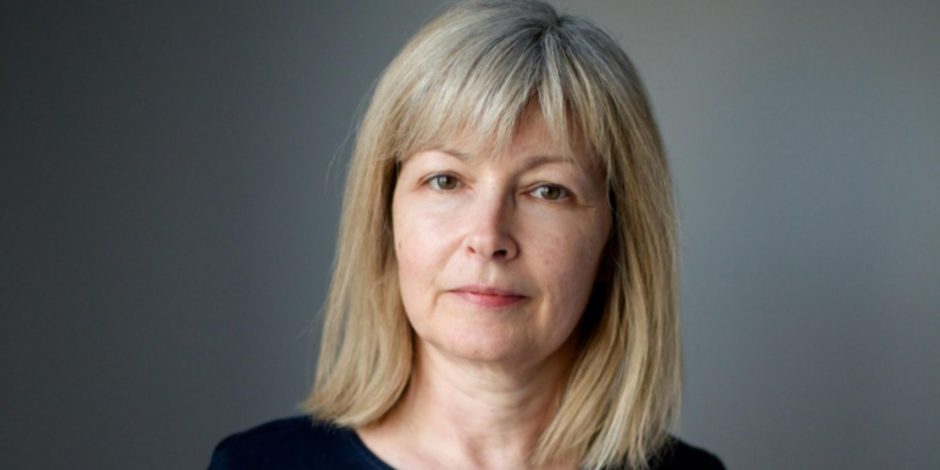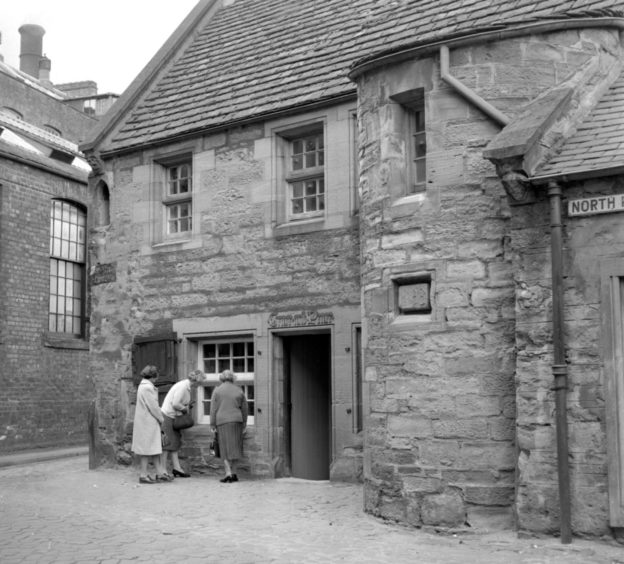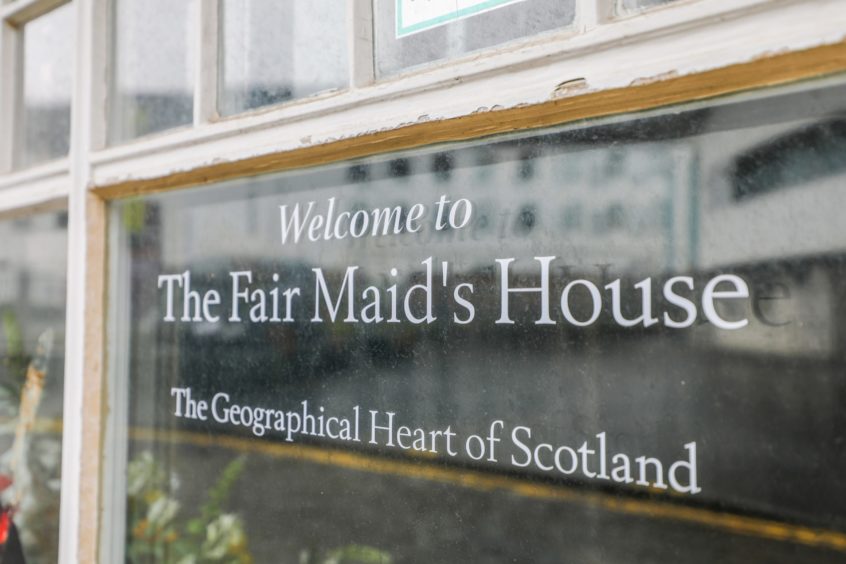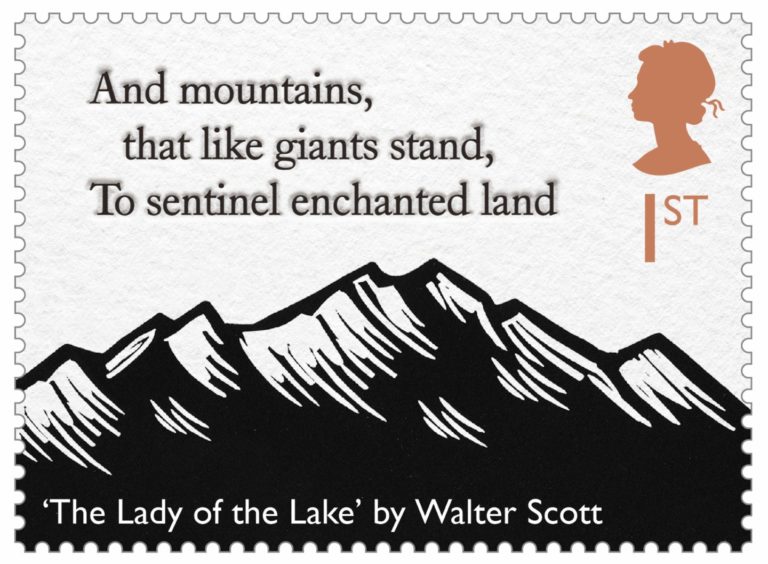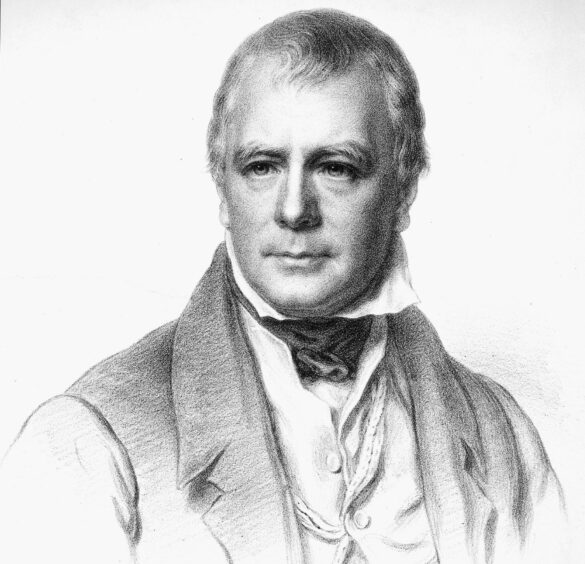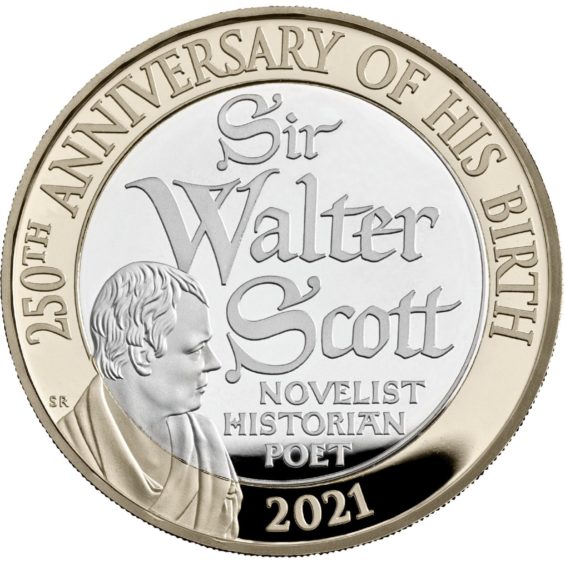Two hundred and fifty years after the birth of novelist Sir Walter Scott, Michael Alexander discovers how the author derived inspiration for his historical fiction from real events and, more specifically, real things.
He has long been considered the father of the modern Scottish tourism industry.
Sir Walter Scott’s early works such as the poem The Lady of the Lake and later his historical novel Waverley, set during the Jacobite rising, ignited an interest in Scotland as a visitor destination.
However, as the 250th anniversary of Scott’s birth is celebrated on August 15, his influence continues being felt to this day.
From inspiring author Diana Gabaldon, whose Jacobite-centric Outlander books, and the subsequent TV adaptation, have brought international visitors to Scotland’s shores, to the huge interest in heritage and culture which has provided motivation for millions of travellers, Scott helped change the way the world views Scotland and how Scots see themselves.
Jenni Steele, VisitScotland’s film and creative industries manager highlights the many sites around Scotland that have a connection to the influential writer – from his impressive country home at Abbotsford and his favourite viewpoint across the Eildon Hills in the Scottish Borders, to the towering Scott Monument in Edinburgh.
There’s also the Fair Maid of Perth statue in the city of its name to the historic steamship that sails his beloved Loch Katrine.
With a year-long plan of activities celebrating Scott and his achievements, there are plenty of opportunities for visitors to discover more about his life and cultural impact.
However, according to Dr Daniel Cook, Reader in English and Associate Director of the Centre for Scottish Culture at Dundee University, it’s only in the last few decades that Scott has been considered alongside his Scottish contemporaries including James Hogg and even Robert Burns.
Before that, Scottish literature was not considered for separate study and Scott was lumped in with the likes of Jane Austen and Charles Dickens.
Prolific writer
“Sir Walter Scott was incredibly prolific,” says Dr Cook, 40, who grew up in Norfolk, studied at Cambridge then worked in Bristol and Mid-West America before moving to Dundee University 10 years ago.
“He wrote almost 30 novels – two of them unfinished – a dozen book length poems.
“He started off as a poet and he was Europe’s best selling poet until a young Anglo-Scottish poet called Byron came on the scene and effectively kicked Scott into a new career as a novelist.”
Scott had a broad range, with novels set anywhere between the 11th and 19th Centuries. He wrote gothic stories, satire and short stories at a time when short stories were not really a thing.
As well as The Fair Maid of Perth, another Tayside connection came via his poem Bonnie Dundee.
People can sometimes be put off by his historical works, Dr Cook says.
But he was “ahead of the curve” – writing some of the earliest stories about Robin Hood, for example, before Robin Hood became a cultural phenomenon.
He wrote novels about the Jacobite period at a time when it was still quite dangerous to do so.
He was one of the first Scottish authors to write in both English and Scots. It’s been speculated that he possibly knew Gaelic.
But his outlook was also very European.
Arguably the first “celebrity author” – vying with Jane Austen who wrote anonymously at the time – he was the first to be a best seller at a time when novels were really expensive and not everyone was able to read.
There’s also a “great irony”, says Dr Cook, that Scotland’s first great novelist wrote a lot of his stories about England.
“It’s almost like it’s a Scot selling England back to England – kind of a reverse colonialism if you like,” he says.
Well connected
A lawyer by trade who later became a sheriff, Scott was at the heart of Edinburgh literary society and very well connected both there and in the Borders.
One of a handful of authors to be knighted for his literary work, he was the “poster boy” for the visit of King George IV to Edinburgh in 1822 – the first visit of a reigning monarch to Scotland in almost two centuries.
As an 18th century Tory (as opposed to a 21st century one), Dr Cook describes Scott as a “very compassionate man” who set up a lot of charities.
He was one of the first to suggest Gaelic should be studied properly and set up a trust fund for Highlanders who’d lost their land in the Clearances.
A knight of the realm, Scott didn’t see it as a contradiction that he was a unionist and very pro-Scotland.
Following Scott’s death in 1832, Edinburgh’s Scott Monument was at the time the largest monument to any author in the world, and the fact the capital’s Waverley station was named after a fictional character, spoke volumes for his high regard, Cook says.
That doesn’t mean today, however, that his work is universally applauded.
So what do other authors think?
Sara Sheridan
Edinburgh-based author Sara Sheridan admits she’s “not a massive fan”.
She reckons she would have “politically disagreed with Scott until the cows came home”.
In her recent book Where Are The Women? she “remapped” the country as if statues had been erected throughout history to commemorate women instead of mainly men.
When it comes to Sir Walter Scott, however, she regards him as quite a likeable character”, adding: “I think there are worse middle aged white upper class men that have statues in Edinburgh that you could take down if you wanted to put up some statues of women!”
In her latest book The Fair Botanics, set in the summer of 1822 when Edinburgh was abuzz with rumours of King George IV’s impending visit, Scott features alongside his wife Lady Charlotte.
Through research she concluded he was a “very generous guy”.
She adds: “He was almost like the best of the patriarchy.
“He was very generous with lots of other creatives – particularly female creatives.
“He had fingers in lots of pies. He was very keen on education. For example in the early 1820s, after the royal visit, he got involved in founding the Edinburgh Academy.
“He would be buying pianos for far distant schools that didn’t have a piano. He was really quite good hearted even though he was slightly on the wrong side of the slavery question!”
Vicki Masters
Former Madras College pupil Vicki Masters, who grew up near St Andrews, recently wrote historic novel The Castilians set against the backdrop of the infamous Siege of St Andrews Castle in 1546/47.
At school, she remembers there being much talk of Rabbie Burns and, a mention of that other Robert, R L Stevenson.
However, she wasn’t aware of Sir Walter Scott until, on a rare and exciting visit to Edinburgh, the iconic Scott Monument was pointed out.
Vicki would like to say she was curious to find out more. But she forgot all about the man, and his monument, until as the reader in the family, she was given a set of Sir Walter Scott novels which had belonged to her great grandfather.
“My hunger for books was vast, and mostly unrequited in those days,” she says.
“I started with Ivanhoe, which sounded romantic. I’d never read anything like it – dense, rich, complex, difficult, and medieval – an era I’d little knowledge of.
“But also frustrating…why did Ivanhoe ride off into the sunset with the vapid Rowena when Rebecca, a woman of power and strength had been by his side throughout, indeed had saved his life? What did it matter that they were of different religions and background? I didn’t believe Ivanhoe loved Rowena.
“Writing this many years later I can still remember my annoyance, aged 15. All credit to Scott, though – Rebecca was the first positive role model of another faith I’d encountered in literature, a refreshing counterbalance to Shylock and Fagin.”
Jo Woolf
Jo Woolf, Writer in Residence at the Perth-based Royal Scottish Geographical Society is “definitely a fan”.
She describes Sir Walter Scott as a “master storyteller, who knew how to spin a good yarn and create compelling characters”.
Understanding of his audience, he’d been absorbing Scottish folklore and legends since childhood, and he knew his history, although like most storytellers he was often creative with dates and timelines in order to suit his plot.
Jo says he undoubtedly paved the way for later historical novelists and helped to establish the novel as a genre to be taken seriously.
However, at RSGS they also have a special connection.
The RSGS visitor centre in Perth is based in the Fair Maid’s House, the fictional home of Catherine Glover in ‘The Fair Maid of Perth’.
In the tale, which is set in the late 14th Century, Catherine’s father is a member of the Glover Incorporation.
“The Fair Maid’s House was, in fact, a meeting place for that ancient guild, but in the 17th and 18th centuries,” she adds.
“As the home of RSGS it is now a meeting place for those who share a passion for all things geographical. I think Scott, with his love of landscape, would have approved!”
Lorn Macintyre
Another writer with a fascination for Scott is Taynuilt-born former journalist, English teacher and BBC script writer Lorn Macintyre.
The now St Andrews-based 79-year-old is in no doubt that Scott can take credit for the founding of the Scottish tourism industry.
However, he laughs that the 135,000 word doctoral thesis he wrote on Sir Walter Scott and the Highlands at Glasgow University in the 1960s was of a size no university would accept today!
“I immersed myself in the works of the so-called “Wizard of the North” because I was intrigued about the sources of his inspiration for such novels as Waverley, Rob Roy and The Fair Maid of Perth,” explains Lorn.
“As a youth Scott’s fascination for Highland history was fired by accompanying his lawyer father in a visit to Alexander Stewart of Invernahyle at Appin, who had escaped wounded from the battle of Culloden after the defeat of Prince Charles’s army was certain.
“In a letter in 1808 Scott confided to a friend: “I have always thought of a Highland poem before hanging my harp on the willows…”.
The resulting epic poem of 1810 The Lady of the Lake was an instant best seller, and Cadell his publisher recalled: “The whole country rang with the praises of the poet – crowds set off to view the scenery of Loch Katrine, till then comparatively unknown.”
“The Wizard had succeeded in creating the Scottish tourist industry.”
Museum exhibition
As an antiquarian and collector, Scott was an active member of the Society of Antiquaries for Scotland, whose collections went on to form the initial core of the Scottish collections of National Museums Scotland.
Visitors to the National Museum of Scotland in Edinburgh can browse the ‘Inspiring Walter Scott’ exhibition, which runs until January 9.
The display shows how Scott drew upon these real historical objects for inspiration in his writing.
Amongst the treasures on display, are a c1745 Jacobite drinking glass engraved with an image of Bonnie Prince Charlie, the type of which feature in Scott’s The Bride of Lammermuir, a sword belonging to a Covenanter, as in Old Mortality, and the Harden spurs which appear in Scott’s The Reiver’s Wedding.
Also featured is an ingenious 18th century sporran purse lock, donated to the Society of Antiquaries of Scotland in 1783. It’s thought this inspired the one belonging to Scott’s characterisation of Rob Roy Macgregor in his best-selling novel Rob Roy. Concealed within it is a pistol with four barrels designed to fire if tampered with.
Dr Anna Groundwater, Principal Curator of Renaissance and Early Modern History says: “I think one of the things we’ve been trying to get across is just how influential and how big a character he was in his own time.
“This display explores how Scott derived inspiration for his historical fiction from real events and, more specifically, real things.
“By combining objects, many of which Scott himself encountered, with relevant audio excerpts from his work, people will be able to get a sense of how vividly these real museum objects inspired elements of his storytelling.”
